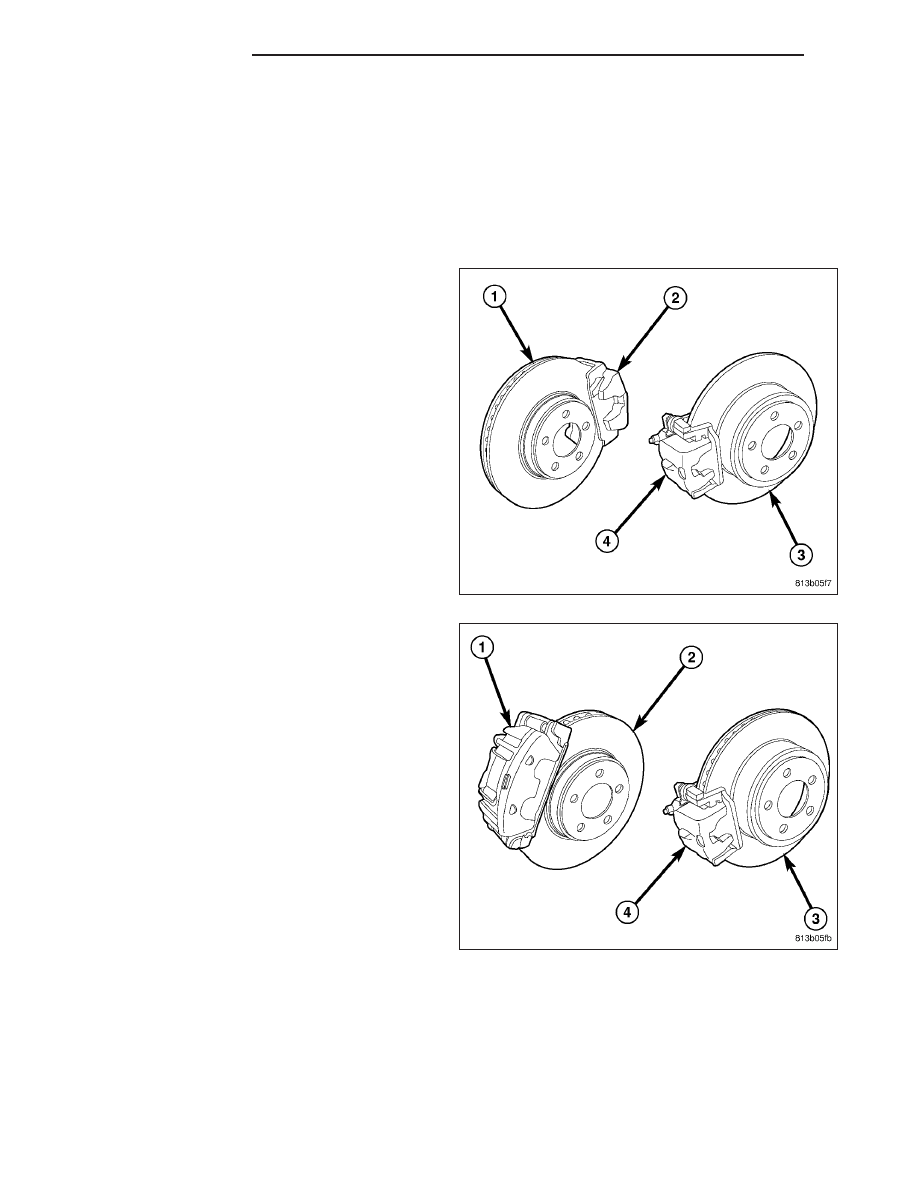Chrysler 300/300 Touring/300C, Dodge Magnum. Manual - part 144

HYDRAULIC/MECHANICAL
DESCRIPTION
DISC BRAKES
Four-wheel disc brakes are standard on this vehicle. There are two four-wheel disc brake systems available, a stan-
dard and a premium. The standard disc brake system is referred to as “Seventeen-Inch.” The premium disc brake
system is referred to as “Eighteen-Inch.”
“Seventeen-inch” four-wheel disc brakes (so called
because they are designed to fit inside 17-inch
wheels) are standard on rear-wheel drive models with
V6 engines. They feature single-piston aluminum cali-
pers (2) and vented rotors (1) in the front and single-
piston aluminum calipers (4) with solid rotors (3) in the
rear.
“Eighteen-inch” four-wheel disc brakes (so called
because they are designed to fit inside 18-inch
wheels) are standard on Chrysler 300 Hemi C and all
international models, and optional on other models.
They feature twin-piston aluminum calipers (1) and
vented rotors (2) in the front and single-piston alumi-
num calipers (4) with vented rotors (3) in the rear.
Although the rear calipers appear the same as the
17-inch system, the rear calipers used with this sys-
tem feature a wider jaw to compensate for the wider,
vented brake rotors used.
Although the twin-piston caliper used is the same,
Rear-Wheel-Drive (RWD) models mount the caliper to
the rear (trailing end) of the knuckle while All-Wheel-
Drive (AWD) models mount the caliper to the front
(leading end) of the knuckle.
Vehicles equipped with the Police Package have heavy-duty brakes. Special brake linings are used front and rear.
The front brake calipers and rotors are the same as the premium “Eighteen-inch” brakes, but the rear brakes are
somewhat different. The rear brake caliper is similar, using the same diameter piston and seals, but is larger to
accommodate a larger brake rotor. The rear brake rotor is a thicker (4 mm thicker than premium), larger diameter
(350 mm) vented unit. The hat section of the rotor remains the same as premium to allow use of the standard
parking brake system. The rear brake caliper adapter (anchor) is different to allow for the larger brake rotor. All
components are serviced the same as premium brakes.
5 - 18
BRAKES - BASE
LX